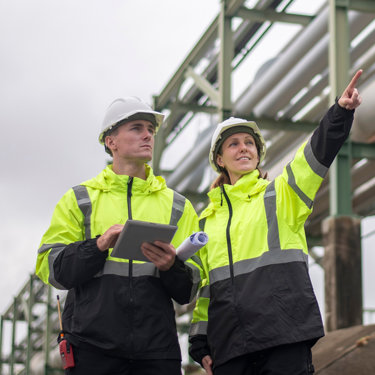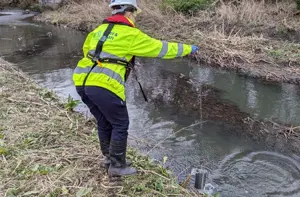
Sewage spill clean-up
Ready to discuss your project?
Please leave your details and a member of our team will reach out to discuss your requirements in more detail and arrange next steps.
We support water companies in the event of a sewage spill to minimise the impact on the environment, local communities, and their reputation by providing expert environmental response, monitoring and remediation services.
Sewage is a public health hazard, causes serious damage to buildings and property, and can be catastrophic for local wildlife, especially if it enters watercourses.
Rapid response to oxygen crash
Penalties for sewage spills are therefore high but a quick response can help mitigate against major environmental damage and avoid fines.
Whether in buildings, on land or into watercourses, we have the capability and equipment to respond fast to any sewage spill.
Our rapid response oxygenation service uses hydrogen peroxide dosing or physical aeration to help increase oxygen levels in your water.
Qualified ecologists continually monitor oxygen and hydrogen peroxide levels during and after deployment.
Features and outputs
- Emergency 24/7 response in the event of a sewage spill.
- Water quality monitoring monitors the effects from a sewage spill and provides evidence of effective remediation to regulators.
- Rapid response oxygenation service uses hydrogen peroxide dosing or physical aeration to increase oxygen levels in your water.
- Ecologists, scientific, technical, and legal experts advise on the remediation and restoration of affected habitats and waterbodies.
- Strategic consultancy on reducing the reoccurrence of a sewage incident.
Added value
Sewage spills and floods can occur for different reasons. They can be caused by liquid leaking from damaged pipes or from defective wastewater facilities, septic tanks, or sewage treatment plants.
An increasingly common problem is sewage flooding triggered by heavy rain, which causes sewers to become too full, forcing sewage up through manholes or combined sewer overflows making its way directly into watercourses.
Sewage treatment
Sewage spills on land will usually be cleaned up via vacuum tanker. However, when sewage enters the watercourse, it gets mixed in the water column, making chemical (hydrogen peroxide dosing) and mechanical aeration the most common responses.
Both can be deployed within a few hours.
- Mechanical aeration solutions may include deployment of venturi, splash and compressor-based bubble solutions and will gradually increase oxygen levels in the waterbody. They can remain in situ to help to sustain the elevated oxygen levels.
- A chemical dosing operation will result in an immediate and sharp boost to the oxygen level in the waterbody, that can then be monitored to ensure full recovery.
Water samples are taken every 24 hours to check levels, and this continues for up to five days after treatment as levels can easily spike. After levels have returned for five days, we’ll step away or if readings are poor, restart the treatment.
You might also be interested in...
Environmental compliance today, creating a sustainable tomorrow
Helping you reduce risk to the environment and your operation by managing assets compliantly while achieving commercial, ESG, and net-zero goals.
Contact our experts


